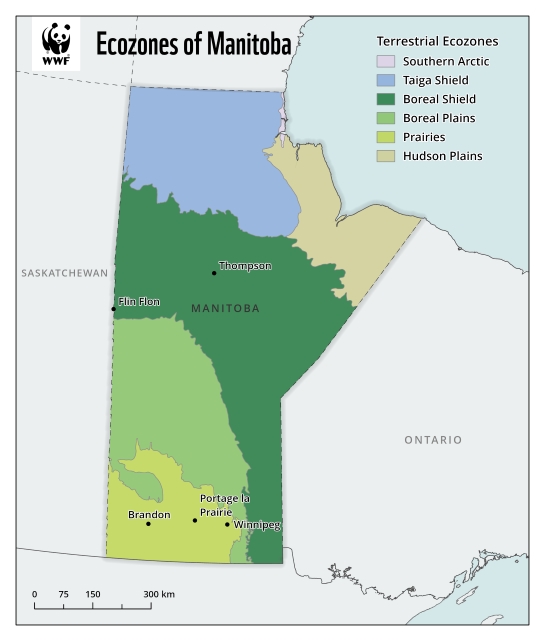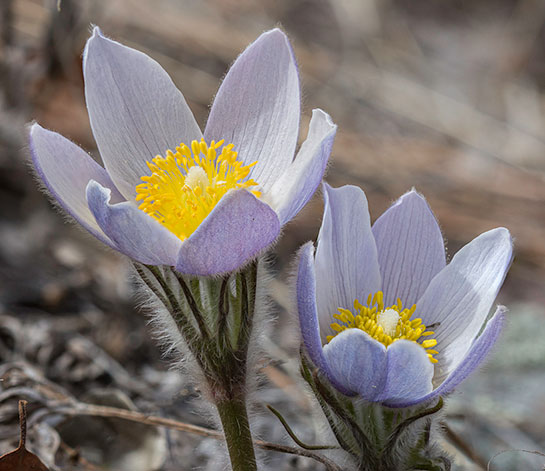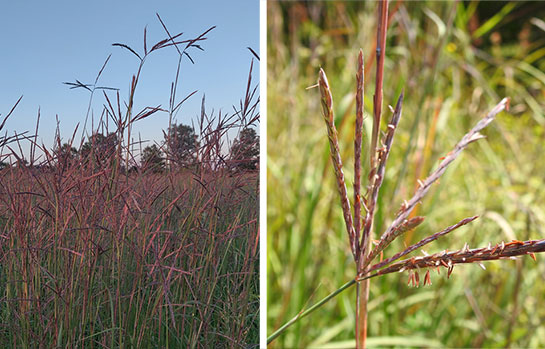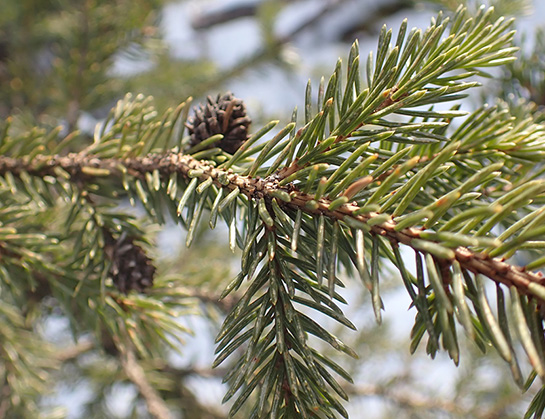Meet some of Manitoba’s nicest native plants

May 12 is Manitoba Day! What better way to mark it than by exploring the province’s rugged and beautiful native plants — and how you can help expand their populations.
What do you picture when you think about Manitoba? Fields of wheat on endless prairies? Polar bears skulking around a small town? But what about vast boreal forests, the Canadian Shield and a mountain higher than Ontario’s tallest?
Manitoba’s, yes, varied landscapes and ecosystems can be divided into five distinct ecozones. And the province’s biodiversity includes more than 600 mammal, bird and fish species alongside more than 3000 species of native plants.
Native plants, of course, are better adapted to local conditions than species introduced from elsewhere and have deep reciprocal relationships with the other living things in their local ecosystems. They provide food and shelter that wildlife depend on.
Let’s take a closer look at some of Manitoba’s native plant stars!
The Prairie Crocus — Manitoba’s Provincial Flower
Grow this fuzzy flower to provide an early-blooming food source for bees.

Description
A beautiful harbinger of spring, the Prairie crocus or Prairie pasqueflower (Pulsatilla nuttalliana) is one of the first wildflowers to make its annual appearance in the southern parts of the province. While named “crocus” by European settlers, it’s actually in the ranunculaceae, or buttercup, family.
This slow-growing plant has blooms ranging from light lavender to bluish purple and distinctive fuzzy flowers and stems are coated with whitish hairs that protect the plant from the cold. The flowers open to reveal yellow centres full of pollen which is then spread on the wind or by insects.
The Prairie crocus is impacted by the decline in its native prairie habitat but is not currently listed as an at-risk species.
Growing tips
You can grow these flowers in your garden in well-drained, dry to medium soil where there is full sun exposure. Check with local growers to buy seed packets, plugs or young plants. This perennial plant can live up to 50 years and grow into a patch 30 centimetres wide with as many as 40 blossoms in a season. It grows in all ecozones in Manitoba, and in many other provinces and territories as well.
Benefits for wildlife
As a very early bloomer, the Prairie crocus provides nectar and pollen in April when there are few other food sources for early-emerging bees. During pollination, a variety of small bee species feed on the nectar and abundant pollen. And in the summer, the Prairie crocus provides a food source of yummy seeds for American goldfinches (bright yellow and black birds also called “wild canaries”) and other birds.
Big Bluestem — Manitoba’s Provincial Grass
Take gardening to new heights by planting this giant of the tallgrass prairie.

Description
Hardy, useful and beautiful, big bluestem (Andropogon gerardii) is Manitoba’s provincial grass and a great choice for landscaping, conservation and agriculture.
This fast-growing grass, native to the Prairies ecozone and other prairie habitats in North America, can grow 1.8 to 2.4 metres tall and changes colour through the growing season — from bright green in spring to orange-red in the fall. As a bunch grass, it forms a dense clump that stays put, rather than spreading to form a patch or lawn like some other species. It can tolerate drought, poor soil and even fires.
Growing tips
If you would like to add height and texture to your garden, big bluestem is widely available in nurseries and garden centres. Consider using it as a border or accent in a garden — full sun isn’t required and any kind of soil will do. Caring for this colourful native grass is easy as its root structure can grow as deep as 3 metres, making it drought resistant and great for reinforcing areas prone to erosion.
Its flowers are small, three-pronged spikes of purple or yellow that become seeds. The seed spikes look like a turkey’s foot — leading to the common name “turkey foot.” You can allow this grass to spread by seed from these flowers, or by underground rhizomes, which are stems that grow horizontally underneath the soil.
Wildlife benefits
The deep root structure makes it ideal for fighting erosion and its high protein content makes it nutritious for grazing animals like horses, cattle and some wild animals. The seeds provide food for birds in fall and winter. This grass also serves as food for caterpillars of many butterfly species, particularly skippers, and shelter for birds such as the grasshopper sparrow and sedge wren.
The Majestic White Spruce — Manitoba’s Provincial Tree
This tree is an evergreen favourite with seed-eating birds and squirrels.

Description
Manitoba’s provincial tree is the white spruce (Picea glauca). Often selected and grown to be a traditional Christmas tree, this species can also make a beautiful and practical addition to your property year-round.
Growing tips
White spruce trees make an excellent windbreak or hedge. They enjoy a cold, long winter and prefer short, cool summers ¾ a great choice for Manitoba gardeners. This vigorous conifer can grow up to 40 metres tall with a trunk diameter of up to 1 metre, so be sure to plan accordingly when planting them on your land.
The white spruce is robust enough to grow in all ecozones of Manitoba, though is found predominantly in the boreal shield ecozone. Beyond Manitoba, it can be found from Alaska to Newfoundland and as far southeast as New Hampshire and Maine.
Wildlife benefits
The spiky foliage and many seed cones provide food for deer, rabbits, birds and squirrels.
Help restore Manitoba’s native plant life
By growing native plants in your yard, container garden or community space, you can help restore wildlife habitats — in Manitoba or wherever you live in Canada. You can learn more about growing native plants, trees and shrubs and track your impact for nature by joining re:grow, WWF-Canada’s how-to hub to support the growing native plant movement.
With resources on the re:grow site, you can plan a project for any space — from a balcony or back garden to a schoolyard or field. These activities are suitable for individuals and households as well as classrooms, campuses, workplaces, neighbourhoods and other groups. Ready, set, re:grow!
Regenerating nature means facing biodiversity loss head-on. By growing native plants, you can make a meaningful, measurable difference. Join the movement and help re:grow Canada!

